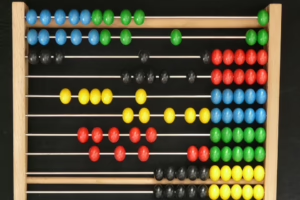Breaking Down Barriers: Math in Social Justice and Equity
Introduction
Mathematics is often regarded as a neutral, objective discipline—built on universal truths and governed by rules that apply equally to everyone. However, when we delve deeper into the implications of mathematical modeling, data analysis, and quantitative reasoning, we discover that mathematics is intricately linked to social justice and equity issues. This article aims to explore how mathematics can serve as both a tool for understanding and addressing social inequalities, and how it can perpetuate barriers if not embraced with awareness and intention.
The Role of Math in Social Justice
Understanding Social Inequalities Through Data
Mathematics provides powerful tools for analyzing data related to social issues. From income inequality to racial disparities in education, statistical analysis reveals patterns that can inform policy decisions and drive social change. For instance, scholars like William Julius Wilson and Robert Putnam have used quantitative data to examine the impacts of economic disadvantage on social mobility, illustrating the cyclical nature of poverty.
Consider the concept of the Gini coefficient, which measures income inequality within a nation. This mathematical formula provides a clear numerical representation of economic disparity, allowing policymakers to assess the efficacy of social programs aimed at reducing inequality. Efforts to tackle systemic issues such as income distribution, housing accessibility, and educational equity all depend on mathematical models that evaluate these societal structures.
Mapping Social Issues
Geospatial analysis, a blend of geography and statistics, employs mathematical techniques to visualize social issues. Geographic Information Systems (GIS) can map areas of poverty, access to healthcare, or educational opportunities, enabling stakeholders to make informed decisions. Such visualizations can be invaluable for nonprofit organizations, city planners, and government officials who seek to allocate resources effectively.
A notable example is the use of GIS in food deserts—urban and rural areas with limited access to affordable and nutritious food. By mapping the locations of grocery stores, health outcomes, and income levels, stakeholders can identify communities in dire need of intervention. This demonstrates how mathematics can illuminate social disparities, galvanizing efforts for equity.
The Intersection of Mathematics and Equity
Bias in Data and Algorithms
While mathematics can be a powerful force for social good, it is not devoid of bias. Algorithms used in areas like predictive policing, hiring, and loan approvals are often based on historical data, which can perpetuate existing inequalities. For example, if a policing algorithm is trained on data that reflects biased law enforcement practices, it may disproportionately target marginalized communities.
To combat this, scholars and practitioners advocate for the integration of equity principles in algorithm design. By critically examining the data—questioning its sources, context, and implications—mathematicians and data scientists can create more equitable algorithms. This practice not only fosters social justice but ensures that mathematics aligns with ethical standards.
Teaching Math with an Equity Lens
Mathematics education is another crucial area where equity and social justice intersect. Traditional teaching methods often lead to alienation, particularly for students from marginalized backgrounds. To promote inclusivity, educators are encouraged to adopt culturally relevant pedagogy that integrates social justice themes into the curriculum.
For instance, lessons that involve statistical analysis of local issues—such as crime rates, school funding disparities, or health outcomes—can engage students meaningfully. This connects mathematical concepts to their lived experiences, fostering a sense of agency and relevance. Such approaches not only bolster mathematical understanding but also empower students to advocate for positive change in their communities.
Case Studies
Case Study 1: The Importance of Math in Public Health
The COVID-19 pandemic illuminated the paramount role of mathematics in public health decision-making. Epidemiologists employed mathematical models to predict virus spread, assess the impact of interventions, and allocate resources. However, the pandemic also laid bare existing health inequities, as marginalized communities faced disproportionately high infection and mortality rates.
Mathematical analyses revealed the systemic factors contributing to these disparities, such as access to healthcare, housing stability, and underlying health conditions. As a result, public health responses increasingly adopted an equity lens—targeting resources to the most vulnerable populations.
Mathematics thus served as both a diagnostic tool to understand health inequities and a guide for equitable resource allocation, showcasing its critical role in social justice.
Case Study 2: The Ferguson Effect
Following the 2014 killing of Michael Brown in Ferguson, Missouri, researchers utilized statistical analysis to explore the relationship between race, policing practices, and crime rates. This analysis revealed systemic patterns of racial profiling and disproportionate policing of Black communities.
By employing regression analysis and other statistical techniques, researchers identified the inherent biases within law enforcement practices. These findings sparked national conversations about police reform and the need for greater accountability, showcasing how mathematics can illuminate social injustices and drive advocacy for change.
Engaging with Communities
Collaborative Approaches
To break down barriers and promote equity through mathematics, engagement with communities is vital. Collaborative approaches can bridge the gap between mathematical expertise and community needs. For example, academic institutions can partner with local organizations to conduct research that serves the community’s interests.
Participatory research methods, where community members actively participate in data collection and analysis, empower individuals to take ownership of the process. This not only enhances the quality of data collected but also fosters trust and demonstrates the value of mathematics in addressing local concerns.
Building Capacity in Marginalized Communities
Capacity-building initiatives aim to equip marginalized communities with the skills and knowledge to use mathematics as a tool for advocacy. Workshops, training programs, and mentorship can empower individuals to analyze data relevant to their experiences and advocate for policy changes.
For instance, programs that teach statistical literacy can enable community members to interpret public data, from school funding to healthcare access, transforming them into informed advocates who can challenge inequitable systems.
Policy Implications
Data-Driven Policies
Effective policymaking should rely on data-driven approaches that prioritize equity. Policymakers must utilize mathematical analyses to assess the impact of proposed legislation on different demographic groups. When considering policies on healthcare, education, housing, and criminal justice, equity assessments can reveal potential disparities.
For example, when designing housing policies, data can highlight how different zoning regulations disproportionately impact low-income communities, allowing for responsive changes that prioritize equitable access to housing. Mathematics provides the foundation for such nuanced policy evaluation.
Accountability and Transparency
Mathematics can enhance accountability and transparency in policy implementation. Public access to data regarding social programs and their outcomes enables communities to hold policymakers accountable. By employing statistical analyses, residents can assess whether interventions are delivering equitable results.
For instance, transparency in school funding formulas—an area often fraught with inequities—can empower parents and community organizations to advocate for fair distribution of resources, thereby promoting educational equity.
Conclusion
The intersection of mathematics, social justice, and equity is a rich and complex field, filled with opportunities for exploration and activism. As we confront increasingly challenging social issues, it is crucial to recognize the potential of mathematics as a tool for both understanding and addressing inequities. While mathematics itself is neutral, the ways in which it is employed can either reinforce barriers or break them down.
In this transformative journey, collaboration, education, and community engagement are essential. By integrating principles of equity in mathematics education, policy-making, and data analysis, we can harness the discipline’s full potential to create a just society. Drawing on mathematical insights allows us not just to quantify disparities but to envision a world where equity is not merely an aspiration, but a reality that we can work toward together.
By recognizing the value of mathematics in social justice, we can empower individuals and communities to advocate for equitable solutions—ultimately breaking down barriers and fostering a society where everyone has access to opportunity, resources, and the promise of a brighter future.


























Add Comment